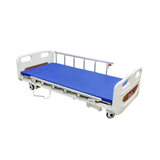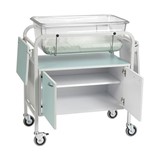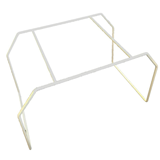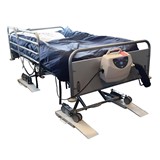Compare ICU bed prices in Australia. Discover costs, features, warranties & compliance tips for hospitals, clinics & aged care.
Key takeaways
- ICU bed prices in Australia range from $5,500 to $45,000+, depending on features such as electric controls, weight capacity, mobility functions, and patient monitoring integration.
- Electric ICU beds are the most common type, offering Trendelenburg positioning, CPR functions, and integrated scale systems, often costing $10,000–$18,000.
- Compliance is critical—all ICU beds must meet TGA regulations and conform to AS/NZS 3200.2.38 (Safety of hospital beds).
- Essential maintenance includes actuator checks, brake testing, and infection control cleaning, with annual service costs ranging from $400–$900 per bed.
- Financing options like equipment leasing or healthcare asset loans can help spread the cost over 3–7 years, often at interest rates between 6.5–9.5% p.a.
Introduction
When every second counts, having the right Intensive Care Unit (ICU) bed can make all the difference to patient outcomes. Whether you're equipping a new critical care facility or upgrading aging equipment in a private clinic, choosing an ICU bed is a serious investment. From adjustable electric beds to specialised bariatric options, there’s a range of models available in the Australian market—each offering different levels of comfort, safety, and clinical utility.
This ICU bed buying guide provides everything you need to know before making a purchase, including prices, types, operations, maintenance, compliance standards, financing options, and frequently asked questions.
Types of ICU beds
Selecting the right bed type depends on your facility’s clinical needs, budget, and patient demographics.
1. Manual ICU beds
- Basic models operated with cranks.
- Suitable for low-acuity facilities or backup/emergency use.
- Price: $5,500–$8,000.
- Limitations: No electronic controls or smart features.
2. Semi-electric ICU beds
- Electric adjustment for head/foot sections; manual height adjustment.
- Offers a middle ground between cost and functionality.
- Price: $7,000–$12,000.
3. Fully electric ICU beds
- Motorised control of height, trendelenburg/reverse trendelenburg, head, and foot positions.
- Common in public and private hospitals.
- Often includes:
- Built-in scale system
- CPR release function
- Bed exit alarm
- IV pole and oxygen cylinder holder
- Price: $10,000–$18,000.
4. Bariatric ICU beds
- Designed for obese patients, with higher weight capacities (up to 450kg).
- Reinforced frame and wider surface area.
- Price: $18,000–$25,000+.
5. Specialised ICU beds
- Includes beds with lateral rotation therapy, integrated monitoring systems, or pressure redistribution surfaces.
- Suitable for long-term or complex critical care patients.
- Price: $20,000–$35,000.
ICU bed prices in Australia
When purchasing an ICU bed in Australia, the prices can vary significantly depending on the type, features, and specifications. Here's a breakdown of what you can expect to pay:
- Manual ICU beds are the most basic and cost-effective option, priced between $4,500 and $6,000. These beds require manual adjustment via cranks and are typically used for lower-acuity settings or as backup units.
- Semi-electric ICU beds, which offer electric adjustment for the head and foot sections but still require manual height adjustment, typically range from $6,000 to $10,000. These provide a good balance of functionality and affordability.
- Fully electric ICU beds, which include electric controls for the height, head, and foot sections, along with additional features like Trendelenburg/reverse Trendelenburg positions, integrated weighing systems, and CPR release functions, tend to fall within the price range of $8,950 to $18,000. These beds are the most common in modern hospitals and healthcare facilities due to their versatility and ease of use.
- Bariatric ICU beds, designed specifically for patients with higher weight capacities (up to 450kg), typically range from $18,000 to $25,000 or more. These beds offer specialised features to accommodate heavier patients, ensuring safety and comfort.
- Specialised ICU beds that come with advanced features like lateral rotation therapy, integrated monitoring systems, or pressure redistribution surfaces can cost between $20,000 and $35,000. These beds are typically used in highly specialised care settings, such as trauma or burn units, where patient needs are more complex.
Overall, the price of an ICU bed is influenced by its complexity, features, and the specific needs of the healthcare setting. When purchasing, it’s crucial to consider the specific functionality and durability required for your institution.
How ICU beds operate
Electric ICU beds are typically controlled through a side-rail panel or nurse control console and may include:
- Motorised actuators for bed articulation and height adjustment.
- Integrated weighing systems to track fluid shifts in patients.
- Tilt functions to help in managing circulation, pressure ulcers, and respiratory conditions.
- CPR quick-release for flattening the bed instantly in emergencies.
- Battery backup to allow operation during power outages.
Key Features to Look for in ICU Beds
This section will help buyers understand the key features that make an ICU bed suitable for their facility's needs.
- Adjustability: Beds with multi-positioning capabilities, such as Trendelenburg or reverse Trendelenburg, allow for better patient management, improving circulation and comfort.
- Patient Monitoring Integration: Many modern ICU beds can integrate with patient monitoring systems, helping to track vital signs and reduce the need for manual data entry.
- Pressure Redistribution: Beds with advanced pressure-relieving mattresses or adjustable pressure settings help prevent bedsores, especially for immobile patients.
- Ease of Cleaning: Beds with smooth, easy-to-clean surfaces and antimicrobial coatings reduce infection risks.
- Safety Features: Look for beds with lockable wheels, side rails, fall prevention alarms, and emergency CPR functions to ensure patient safety.
Installation and Setup Considerations
This section can guide buyers through the practical aspects of setting up ICU beds within their facilities.
- Space Requirements: ICU beds can be large and require significant space. Ensure that your facility has the necessary floor area for bed movement, accessories, and staff access.
- Electrical and Power Requirements: Ensure that the electrical system in your facility can accommodate electric ICU beds. Some beds require dedicated circuits or backup power systems to function during power outages.
- Integration with Other Equipment: Consider how your ICU beds will integrate with other hospital equipment, like ventilators, patient monitoring systems, and IV pumps.
Maintenance and servicing
ICU beds are high-usage equipment requiring routine checks for safety and reliability.
Scheduled maintenance should include:
- Brake function testing
- Electrical safety and actuator tests
- Castor and wheel lubrication
- Frame and structure inspection
- Infection control cleaning protocols
Typical servicing costs:
- Annual service per bed: $400–$900
- Replacement parts:
- Motors: $800–$1,500
- Handsets: $200–$400
- Actuators: $300–$900
Tip: Choose suppliers who offer local support and parts availability.
Financing ICU beds
Given the capital investment, financing options can make ICU beds more accessible.
Options include:
- Chattel mortgage: You own the bed while making repayments.
- Operating lease: Use the bed while payments are tax-deductible.
- Healthcare asset loan: Tailored for medical practices, with flexible repayment terms.
Typical loan terms:
- Term: 3–7 years
- Interest rate: 6.5% – 9.5% p.a.
- Balloon payments: Optional, depending on loan type
Pro tip: Check if your finance provider covers delivery, installation, and servicing in the agreement.
Warranty considerations
ICU beds typically come with warranties ranging from 1 to 5 years, covering:
- Electric components
- Structural integrity
- Actuator and motor systems
Questions to ask suppliers:
- Is there a separate warranty for motors or controls?
- Does the warranty include on-site repairs?
- Are service visits included or billed separately?
Compliance and certification in Australia
All ICU beds sold in Australia must meet Therapeutic Goods Administration (TGA) standards. Buyers should confirm:
- TGA registration of the bed and supplier (TGA).
- Compliance with AS/NZS 3200.2.38 – Safety standards for hospital beds.
- IEC 60601 electrical safety compliance.
- Infection control design, e.g., mattress impermeability and cleanable surfaces.
Frequently asked questions
1. What is the life expectancy of an ICU bed?
Most ICU beds last 10–15 years, depending on usage and maintenance. High-use environments may require more frequent replacement.
2. Can ICU beds be upgraded later with accessories?
Yes, many beds allow aftermarket additions like:
- Pressure-relieving mattresses
- Patient monitoring integration
- Bed exit alarms
- Side rail padding
Ensure compatibility before purchase.
3. Do all ICU beds come with battery backup?
Not all models include battery backup. Confirm this feature if uninterrupted use during power outages is critical for your facility.
4. Are ICU beds tax-deductible for clinics?
Yes. ICU beds can typically be claimed as capital equipment under the instant asset write-off scheme (subject to eligibility and ATO thresholds).
5. How soon can delivery and installation be arranged?
Lead times range from 1 to 12 weeks, depending on availability and whether the bed is custom-ordered. Installation is usually completed within 1–2 hours by trained technicians.
Final thoughts
Investing in a high-quality ICU bed is not just about compliance—it's about ensuring critical patients receive the care they need in a safe, responsive, and efficient environment. Make sure you compare options based on type, warranty, parts availability, and compliance—not just price. And consider financing solutions to ease upfront cash flow impact.






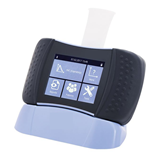
-160x160-state_article-rel-cat.png)
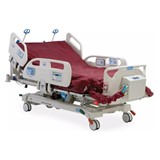
-160x160-state_article-rel-cat.png)
